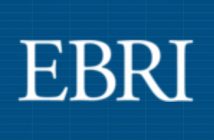Risk management is a process in which the possible outcomes are analyzed. Risk-takers take risks to optimize their earnings. Optimizing your success by minimizing the threats may lead to profitable growth in the future. Reducing uncertainties for possible action needs a lot of thought and energy. All the possible negative outcomes are predicted keeping in mind the current scenario. Risk can be perceived in a positive or a negative way.
Positive perception of the risk includes an in-depth analysis of the possible outcomes. The negative perception of the risks includes the threats that may affect the possible outcome and how to minimize those threats.
Risk management process
The risk management process includes step by step analysis of the possible risks attached with achieving your objectives. Emerging risks needs to be handled with precaution as one wrong action may lead to the failure of the project. There are five basic steps in this process which are as follows:
Identify the risk
First, the risks are identified before the project starts. Legal risk, environmental risk, market risks are analyzed deeply. All the stakeholders of the projects may be notified about the possible risks by inserting the information into the risk management system.
Analyze the risk
Then the risks are analyzed by identifying the risks which may have a huge impact on the achievement of objectives and the risks which may be minor inconveniences.
Evaluate the risks
All the risks are ranked and prioritized according to their severity. Minor risks are rated low and major risks are given the highest ranking.
Treatment
Every risk is analyzed to eliminate or contain the risk. Risks that may produce the greatest outcomes and fewer threats are included and the risks which include fewer outcomes and greater threats are eliminated.
Review
Once the risks are defined, they are monitored right from the start to finish to analyze any sudden occurrence of the risk.
Risk analysis
All the possible vulnerabilities are predicted and minimized through the guidance provided by the authorities. Each person is given a specific task to perform. Clarity on the tasks assigned to each person may lead to positive outcomes.
A risk register is maintained to document the entire risk management process including identification of threats, possible outcomes, the time span of each action, and the responsibility of each person
Key performance indicators
Each organization needs to look into key performance indicators like liquidity, profitability, and utilization of assets to their full potential. Risk management also includes looking for ways to make a specific project successful. Key performance indicators predict whether the project will go as planned or does it require more input?
Risk appetite vs. risk tolerance
Organizational leaders first define their risk appetite which means the number of risks that they are willing to take to reach their goals. Some leaders are risk-takers while some are risk aversers. The risks which are out of their comfort zone will be eliminated and the risks which can be controlled are analyzed to minimize the threats attached to them.
Risk tolerance, on the other hand, refers to the measure of how much of a loss an investor is willing to bear to meet his goals.




